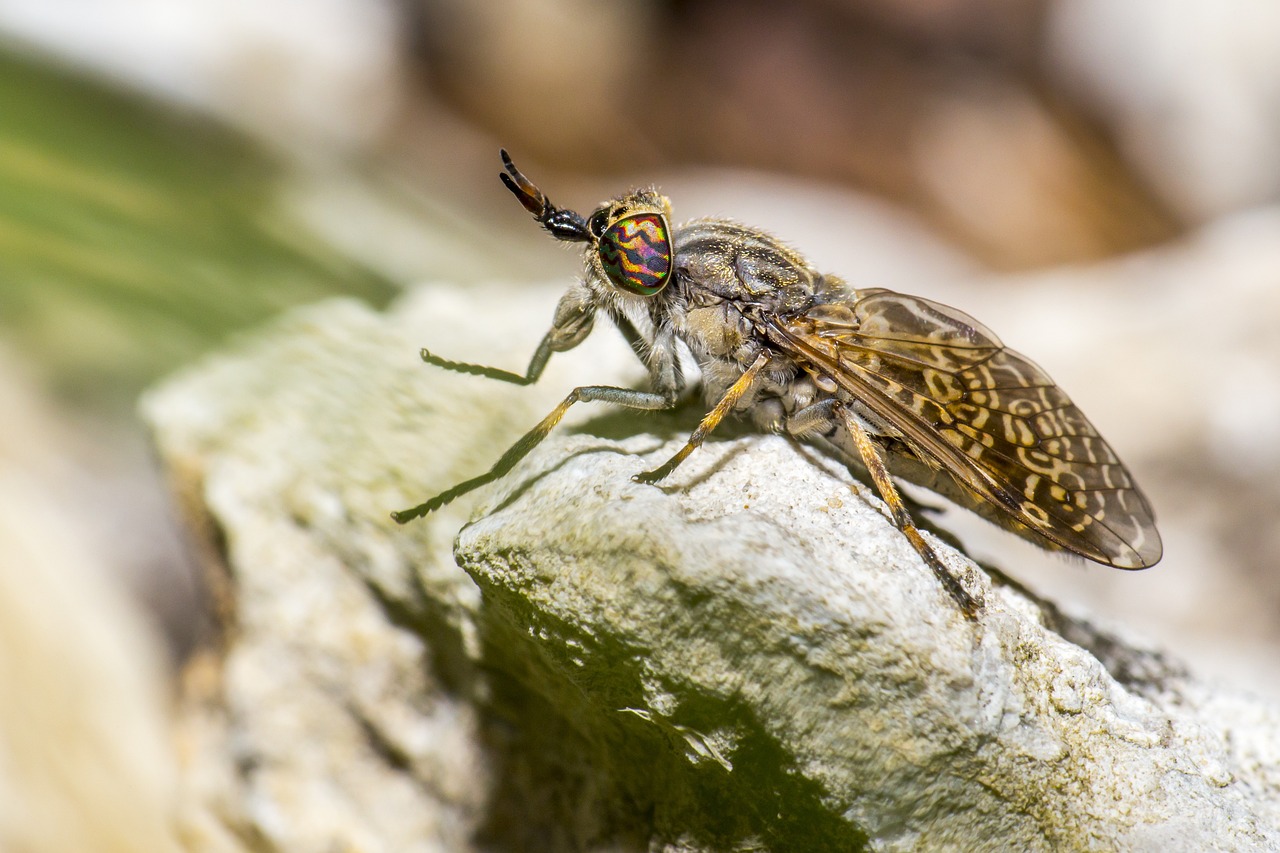The Notch-horned Cleg Fly (Haematopota pluvialis) is a member of the family Tabanidae, commonly known as horse flies. This species is known for its biting behavior and distinctive appearance. Here’s an overview of Haematopota pluvialis:
Appearance:
- Size: Adults are medium-sized, measuring about 6 to 10 millimeters in length.
- Coloration: They have a greyish-brown body with dark markings. The eyes are large, often displaying iridescent colors with complex patterns.
- Antennae: One of the most distinguishing features is the notch or indentation in the third segment of their antennae, giving them the name “notch-horned.”
- Wings: The wings have dark bands or mottled patterns, and they often rest with their wings folded over their abdomen.
Habitat:
- Preferred Habitats: Haematopota pluvialis is commonly found in moist environments such as wetlands, marshes, meadows, and woodland edges. They are often near water sources, where females lay their eggs.
- Geographic Range: This species is widespread across Europe and parts of Asia, thriving in temperate regions.
Behavior:
- Feeding: Females are blood-feeders and bite mammals, including humans, to obtain blood meals necessary for egg development. Males, on the other hand, primarily feed on nectar and do not bite.
- Activity: They are most active during warm, humid conditions and are known for being persistent biters.
- Flight: Haematopota pluvialis flies with a characteristic buzzing sound and can be quite agile in flight.
Life Cycle:
- Eggs: Females lay their eggs in batches on vegetation or soil near water. The eggs are cylindrical and dark in color.
- Larvae: The larvae are aquatic or semi-aquatic and feed on organic matter and small invertebrates. They are elongated, segmented, and can survive in various moisture conditions.
- Pupae: Pupation occurs in moist soil or mud. The pupal stage is typically short, lasting a few weeks.
- Adults: Adults emerge in late spring to early summer and are active through the warmer months.
Ecological Role:
- Pollination: While males contribute to pollination by feeding on nectar, females are less involved due to their blood-feeding habits.
- Predators: Both larvae and adults serve as prey for birds, amphibians, and other insectivores.
- Parasite Vector: Females can transmit diseases and parasites through their bites, affecting livestock and, occasionally, humans.
Conservation Status:
- Population: Haematopota pluvialis is not considered threatened and is fairly common in its suitable habitats.
- Threats: Habitat destruction, particularly the draining of wetlands and marshes, can impact local populations.
Interesting Facts:
- Painful Bite: The bite of a female Haematopota pluvialis is painful due to their mouthparts, which are adapted for piercing skin and sucking blood.
- Camouflage: Their coloration and patterns provide effective camouflage against the background of vegetation and soil.
- Seasonal Activity: They are most active in the summer months, aligning their lifecycle with the availability of warm weather and potential hosts.
Identification Tips:
- Notched Antennae: Look for the distinctive notch in the third segment of their antennae.
- Wing Patterns: The dark, mottled wing patterns can help distinguish them from other fly species.
- Behavior: Observing their persistent biting behavior and habitat preferences can aid in identification.
In summary, the Notch-horned Cleg Fly (Haematopota pluvialis) is a notable species due to its biting habits, distinct appearance, and role in both pollination and the ecosystem’s food web. While not considered threatened, its presence and activity are closely tied to the availability of moist, suitable habitats.
Visited 824 times, 15 visit(s) today
Views: 1372
Subscribe to the newsletter:
